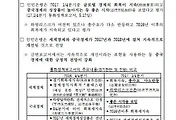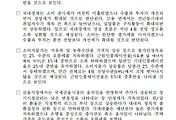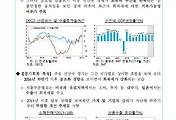제목 : 기업특성에 따른 연령별 고용행태 분석
저자 : 이상욱(서울과학기술대학교), 권철우(경북대학교), 남윤미(미시제도연구실)
<요약>
본 연구에서는 기업들의 고령 노동자와 청년 노동자의 고용비중 결정요인을 「사업체패널조사」를 이용하여 실증적으로 분석하였다. 그리고 두 연령대 고용은 서로 상관관계가 있을 가능성이 높으므로 본 연구에서는 이를 반영하여 Seemingly Unrelated Regression(SUR) 모형을 이용하였다.
추정결과에 따르면, 상대적으로 청년 노동자의 임금이 높은 산업, 비정규직 비중이 낮은 기업, 컴퓨터 활용도가 높은 기업, 규모가 큰 기업, 업력이 짧은 기업, 수도권 소재 기업, 기존 노동조합의 영향이 크지 않은 기업 등에서 청년 고용비중이 높은 것으로 나타났다. 이에 반해, 상대적으로 고령 노동자의 임금이 낮은 산업, 비정규직 비중이 낮은 기업, 컴퓨터 활용도가 낮은 기업, 규모가 작은 기업, 업력이 오래된 기업, 기존 노동조합의 영향력이 존재하는 기업, 비수도권에 존재하는 기업 등에서 고령 노동자의 고용비중이 높은 것으로 나타났다.
이러한 분석 결과는 기업특성별로 연령대별 고용비중이 상이하므로 연령대별 고용 증대를 위한 맞춤형 정책접근이 필요함을 시사한다. 특히 청년고용 활성화를 위해서는 신생기업 육성 지원, 기업 내 정보통신 기술 활용도 제고 등이 효과적인 것으로 판단된다.
<Abstract>
We empirically analyze the determinants of employment proportions of workers by age groups, using data from “Workplace Panel Survey(WPS)”. Considering that the employments of a firm by different age groups are highly likely to be correlated with each other, we employ the Seemingly Unrelated Regression(SUR) Model.
The regression results tell us that the firms with the following characteristics hire more young workers: paying higher wage for young workers, having a lower ratio of temporary workers to permanent workers, a higher computer utilization, a bigger size, or a shorter age, located around the capital, or less influenced by the labor union. On the other hand, the firms that pay a lower wage for aged workers, have a lower ratio of temporary workers to permanent workers, a smaller size, or a longer age, not located around the capital, or more influenced by the labor union have the higher proportion of aged workers to total workers.
According to the estimation results, policies with consideration of these determinants of employment proportions by age groups are necessary for increasing employment of each age group.
![]() 함께보기
함께보기
- [동향분석] 트럼프 정부 이민정책에 대한 시장의 평가
- [BOK 경제연구 제2017-17호] Equity Market Globalization and Portfolio Rebalancing
- 기업특성에 따른 연령별 고용행태 분석
- 통화정책방향(2017. 5. 25.)
- [동향분석] 미 연준의 보유자산 규모 축소 조기 시행 가능성과 관련한 시장의 논의
- [동향분석] 미국 무역수지 상황과 관련 이슈
- 통화정책방향(2017.5.25)
- 유로지역의 낮은 임금상승세 지속 배경 및 시사점
- 최근의 경제동향 2017년 4월호
- 경제전망보고서(2017년 4월)
- 건강보험료 부과체계 개편안 국회 의결
- 주요국의 재정 현황
- 2017년 3월중 금융시장 동향
- 통화정책방향(2017.4.13)
- 2017 산업위험 평가-나이스신용평가
- [제20대국회 개원기념 세미나] 한국경제의 진단과 해법 결과보고서
- 사잇돌 대출 확대 방안 발표
- 한국카카오은행㈜에 대한 은행업 인가에 관한 소식

 1. BOK 경제연구 제2017-16호 본문.pdf
1. BOK 경제연구 제2017-16호 본문.pdf


